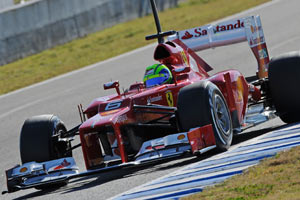bettonracing wrote:PaulB wrote:It seem to me that such a suspension is much more difficult to set up because of the very low movement. The angle of the pull rod is so low, that the geometrical movements musst be very low compared to a conventional push rod at the front.
This was either posted earlier in this thread, or somewhere in the "pullrod vs. pushrod" thread:
http://www.vivaf1.com/blog/?p=10280
Whether or not they're back to the same motion ratio of last year's pushrod is debatable w/o the actualy geometry, but it's clear that they're at least approaching the same motion ratios.
Regards,
Kurt
I did a geometrical analysis. what I found is that:
The different control arm radii, and the vertical distance of the bellcrank from the control arm mounting points is what determines how much the push/pull rod displaces when the suspension moves. The Ferrari pull rods move a similar amount to the push rod using rough measurments.
In general though, for a similar vertical distance of the bell crank from the nearest control arm mounting point, the pull rod
moves more for every unit displacement of the wheel. This is because the pull rod bell crank is mounted lower than the upper ball-joint, the upper a-arm has smaller radius AND the suspension moves upwards from the rest position.
For the push rod - you have to mount the bell crank much higher than the control arm mounting points to get a similar ratio to a pull-rod. that is why you see those bumps on top of the noses of the push rod cars.
One thing though. The pull-rod was at 13 degrees moving to 15 degrees. The push rod was at 41 degrees moving to 40 degrees with a bump of 20mm. Notice that you still have to contend with
2.5 times the force being transmitted through the pull rod.





